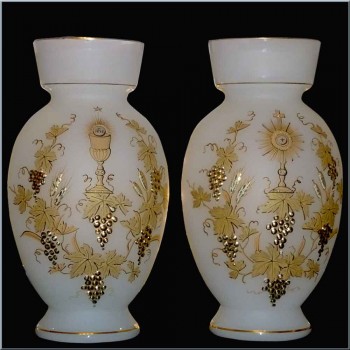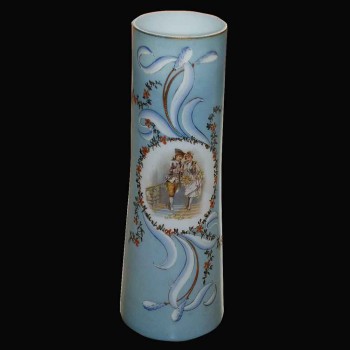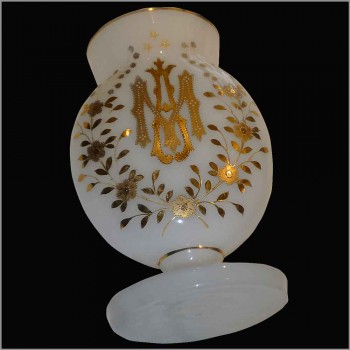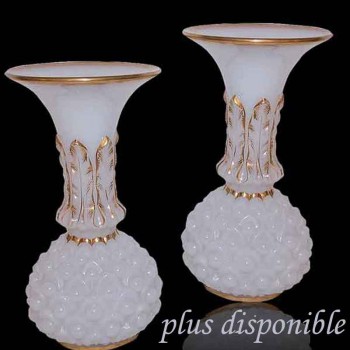Crystal Opaline
The Opaline glass is also a decorative glass style made in France from 1800 to 1890, although it reaches its apogee during the reign of Napoleon III in the years 1850 and 1860. The glass is opaque or slightly translucent, and may appear either white or brightly colored in shades of green, blue, pink, black, lavender and yellow. The glass has a high lead content that defines it as "half crystal" or semi crystal. The main influences on this style of glass were the 16th century Venetian milk glass and the English white glass produced in the 18th century in Bristol.
Many different parts have been produced in opaline glass, including vases, bowls, cups, chopped, carafes, perfume bottles, cans, clocks and other instruments. The popularity of the Opaline glass began during Napoleon's reign. The cities involved in the production included Le Creusot, Baccarat Saint-Louis Réunion, as well as various locations in England.
All the Opaline glass is blown by hand and has a rough or polished pontil on the bottom. There are no seams or engravings on the machine. Many pieces of opaline glass are decorated with gilding. Some with flowers or hand-painted birds. Many have bronze bronze mounts, rims, hinges or brackets. The real Opaline glass was only produced in France. In the 20th century, Italy produced a similar glass and called it opaline genuine.
Most opaline lenses are not marked or signed.
Portieux Vallerysthal has made a lot of blue glass of Robin's egg that they call Opaline. This was produced later and in much larger quantity and is not as rare or precious.
The two best references for French opaline Glass are the Opalines of Christine Luke and the French Opaline in the nineteenth century of Yolande Amic. Both are in French.










